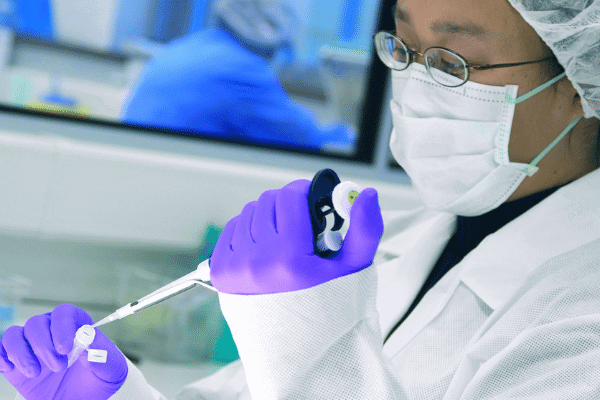Great Crested Newt eDNA
What is eDNA?
eDNA is DNA that is collected from a range of environmental samples including soil and water rather than being directly sampled from a plant or animal. All organisms leave traces of their DNA as part of their normal existence. Sources of eDNA include, faeces, mucus, gametes, skin, carcasses and hair. The collection of eDNA offers great potential for monitoring species, both common ones and those which require efforts to preserve their existence.
This analysis offers an alternative to traditional GCN survey methods that require multiple site visits at times defined by the specific method being used. eDNA analysis can provide a presence/absence result after just a single site sampling visit. Water samples collected are sent to Cellmark’s laboratories for testing using the protocol recommended by Natural England.

Great Crested Newts eDNA testing
Great crested newts (GCN; Triturus cristatus) are a protected species in the UK1. Deliberately capturing, killing, disturbing or injuring great crested newts at any life stage and damaging, destroying or obstructing access to a breeding or resting place, are prohibited by law. GCN surveys are required for development projects that could affect this species.
Most frequently ponds are surveyed during the great crested newt breeding season, which runs in the period from March until June. Great crested newt survey methods for bodies of water that Natural England accept include: environmental DNA (eDNA) testing, bottle or funnel trapping, egg search, torch surveys and netting. eDNA analysis is a relatively new methodology where the presence of a species is detected by analysis of the DNA contained within an environmental sample (e.g. water or soil).
Organisms are continually shedding DNA into the environment. Shed skin cells, sperm, eggs, mucus and faeces are sources of DNA which GCN release into bodies of water during the breeding season. Although recent studies2 have indicated the Great crested newts DNA can be found in the water at any time of the year, Natural England will only accept eDNA survey results from samples collected between 15 April and 30 June.
1. Great crested newts are listed as protected in the following documents: Appendix II of the Bern Convention; Annexes II and IV of the Council Directive 92/43/EEC on the conservation of natural habitats and of wild fauna and flora; Schedule 5 of the Wildlife and Countryside Act 1981; Schedule 2 of the Conservation (Natural Habitats, &c.) Regulations 1994.
2. Rees et al. BMC Res Notes (2017) 10:327; Buxton et al. (2017) Sci. Rep. 7, 46294; Buxton et al. (2018) PLoS One 13(1):e0191737

Forensic Quality Service
As well as offering eDNA testing for detecting great crested newts Cellmark also has a 30 year heritage of providing high quality DNA analysis to the forensic market. We would like to reassure you that our extensive experience which often involves working with challenging DNA samples enables us to deliver a "Forensic Lab Quality" service for you.
Cellmark has a history of pioneering the introduction of quality standards in DNA and forensic testing and our state of the art laboratories in Abingdon, Oxon, follow the protocol as set down by Defra and Natural England for the surveillance of Great Crested Newts.
